16 minutes to read
Top 6 Test Management Tools


Mykhailo Ralduhin
Senior QA Engineer
Summarize with:
At our company, we understand the importance of utilizing the best test management tools to streamline software testing processes and enhance overall productivity. To assist you in making an informed decision, we have curated a comprehensive list of the top 5 test management tools available in the market today. These tools are designed to meet the diverse needs of software testers and help them achieve effective test planning, execution, and reporting. Let's dive into the details!
What are test management tools?
Test management tools are software applications that act as a central hub for organizing and managing all your testing activities. They keep everything in one place, from test cases and plans to data and bug tracking, making the testing process more streamlined and efficient.
Imagine ditching all those scattered documents and spreadsheets. Test management tools keep everything in one place – test cases, plans, data, the whole shebang. This frees us up to focus on what we do best: building awesome tests that really put our software through the wringer.
But these tools are more than just filing cabinets. They help us plan our testing strategy, run both manual and automated tests smoothly, and track down every single bug we find.
So, what should we look for in a test management tool? Here are a few must-haves:
Rock-Solid Test Case Management:
The foundation of good testing is clear, concise, and reusable test cases. The tool should make it easy to create them, keep track of different versions, and link them directly to specific requirements.
Effortless Test Execution:
We need things to run smoothly, right? So the tool should integrate with our favorite test automation frameworks and handle different types of testing, like functional, regression, and performance testing. Features like scheduling and running tests in parallel can save us a ton of time too.
Bug Tracking Like a Boss:
Finding and fixing bugs is our bread and butter. The ideal tool should have a strong defect tracking system where we can easily log, assign, track, and squash all those bugs. Bonus points if it integrates with popular bug tracking systems like Jira.
Seamless Integrations:
Wouldn't it be amazing if all our development tools talked to each other? A test management tool that integrates with everything else – project management tools, version control systems, bug tracking – keeps everything in sync and saves us a ton of headaches.
Collaboration is Key:
Communication is key for a successful QA team. We need a tool that makes it easy to work together with features like discussion boards, comment sections, notifications, and real-time collaboration. This way, everyone's on the same page and no bug gets left behind.
Data Makes Decisions Easier:
Data is king! We need good reporting and analytics to see how our testing is going and where we can improve. The tool should give us customizable reports, informative dashboards, and cool data visualizations so we can make smart decisions and keep getting better at testing.
By choosing the right test management tool, we can streamline our testing process, build high-quality software that blows everyone away, and make sure our development cycle runs smoothly. So, let's find the perfect tool and take our testing to the next level!
Here is a list of the best test management tools, including the definition and top features:
1. Practitest
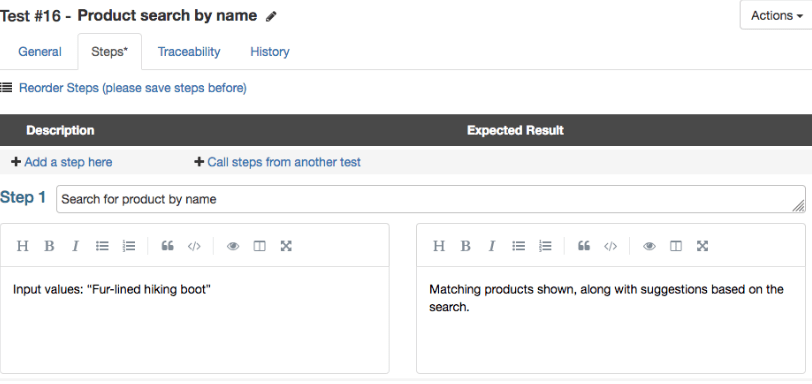
Website: www.practitest.com
Description: Professional all-in-one application lifecycle management solution for manual and automation.
Main Features:
Test case management
Once created, tests can be retrieved from the library and reused again, besides the same test can be used for different variables with step parameters. All results are correlated across various releases and products.
Test sets and runs
Users can refine steps and cycles before or during execution. Test Set shifts can be used for instant test suites with different variables. PractiTest application lifecycle management solution enables automation launch and result integration. Besides, users can track intuitive testing trends with exploratory testing defining charters, make various annotations, and report bugs from the runs.
Requirement management
System displays all requirements and user stories that can be linked to test cases to achieve better visibility into the status of a project.
Issue management
Practitest has internal Issue management and built-in 2-way integration with leading bug tracking solutions such as Jira, Azure DevOps, Pivotal Tracker, YouTrack, CA Rally, and others. All issues can be tracked with traceability and personal assignments. Bug issues are created automatically directly from test runs regarding information detected by testers. The anti-duplicate bug mechanism helps to save time. Users get email notifications about issue updates.
Data structuring
Test suites can be organized according to your custom cycles and sprints. Data can be simultaneously structured concerning different criteria, like components, types, versions, etc. A dashboard can be customized to view the tests, statuses, and reports that you want to see.
Seamless integration
Testing processes can be optimized with 2-way integrations with bug tracking tools like Jira, Redmine, YouTrack, Pivotal Tracker, Bugzilla, Rally, Azure DevOps, etc. Bug reports are overseen, and tests are managed with built-in integrations and API integration options. Manual and automation testing can be optimized as well with automation and CI processing integrations
Advanced reporting
All testing results can be visualized and managed in one place. Stakeholders can view customized reports and dashboards with certain data they want to see. Live dashboards can be inbuilt into external systems like Confluence, Wikis, or web portals. Daily, weekly and monthly reports can be run. Information can be exported to statistical and reporting engines for further processing.
Practitest is Cloud-based
Being cloud-based, Practitest enables you to run 24/7 independently of scheduled maintenance or IT downtime and your team members with instant access. It is possible to assign rights and adjust group settings for each project.
Support
Customer support provides you with almost instant response. Detailed customization guidance, data import support, and methodology consulting are available as well.
Time management
The tool enables users to fix the average testing time and analyzes it to compare estimates to actual test run duration.
2. Zephyr
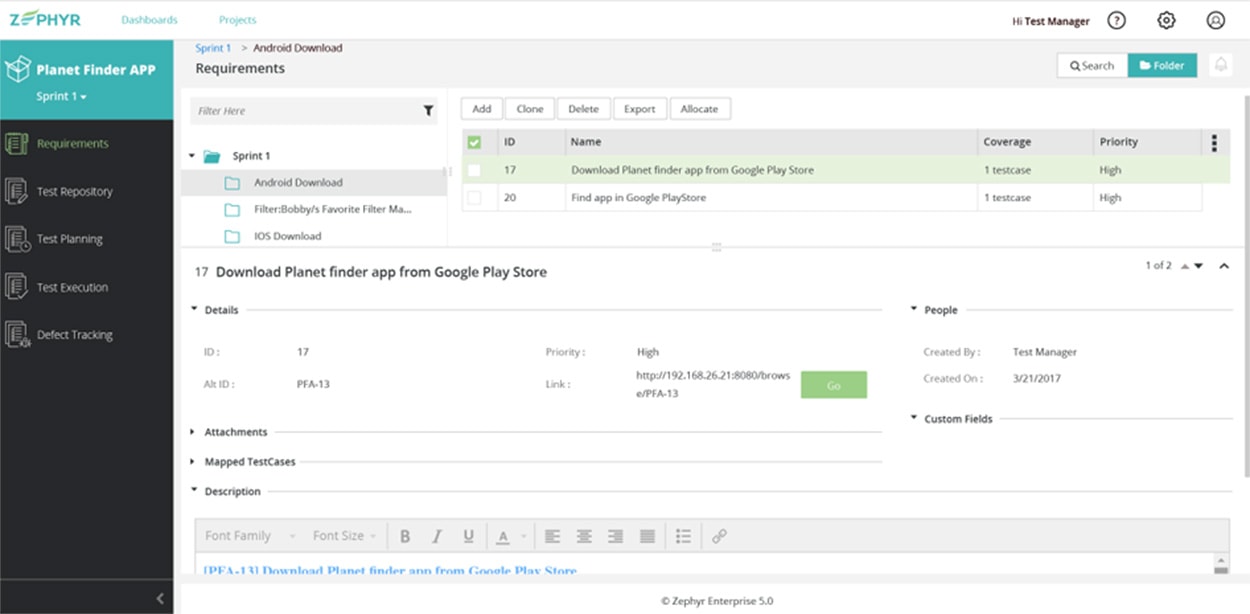
Website: www.getzephyr.com
Description: Zephyr provides a suite of tools to optimize speed and quality of software testing, empowering users with the flexibility, visibility, and insights you need to achieve Continuous Testing Agility.
Main features:
Availability of all needed information
All test sets across all releases, projects, and sprints are in one system. Depending on your current needs, various information can be displayed: tests, metrics, processes, executions, reports, etc. Users can save time and increase productivity with the help of repurposing and reusing.
Import of requirements
Real-time Jira-integration imports all user stories, epics, etc. Users can maintain traceability having all requirements stored in Zephyr.
Test repository
All created tests can be stored, categorized, and organized. Structured folder management encourages easy test reuse. This option noticeably reduces project kick-off time.
Test planning
Users can create test circles and phases, align to sprints and test suites, and assign resources to execute planned tests.
Test execution
Users can execute tests one by one, launch automated execution, and manage test pass or failure status. Bugs can be filed into Jira.
Real-time dashboards and metrics
Users can quickly choose from various test gadgets and view real-time metrics and status of projects, cycles, and sprint.
Data sharing
Reports and project status can be shared with a URL to any internal or external audience.
Customizable reporting
With the help of Zephyr apps, users can create different reports depending on their current needs. Comprehensive traceability reports can be gained, utilizing real-time Jira integration.
Open architecture
Users can launch automated tests with any framework in real-time and populate all results in this one-stop-shop for continuous integration.
3. TestLodge
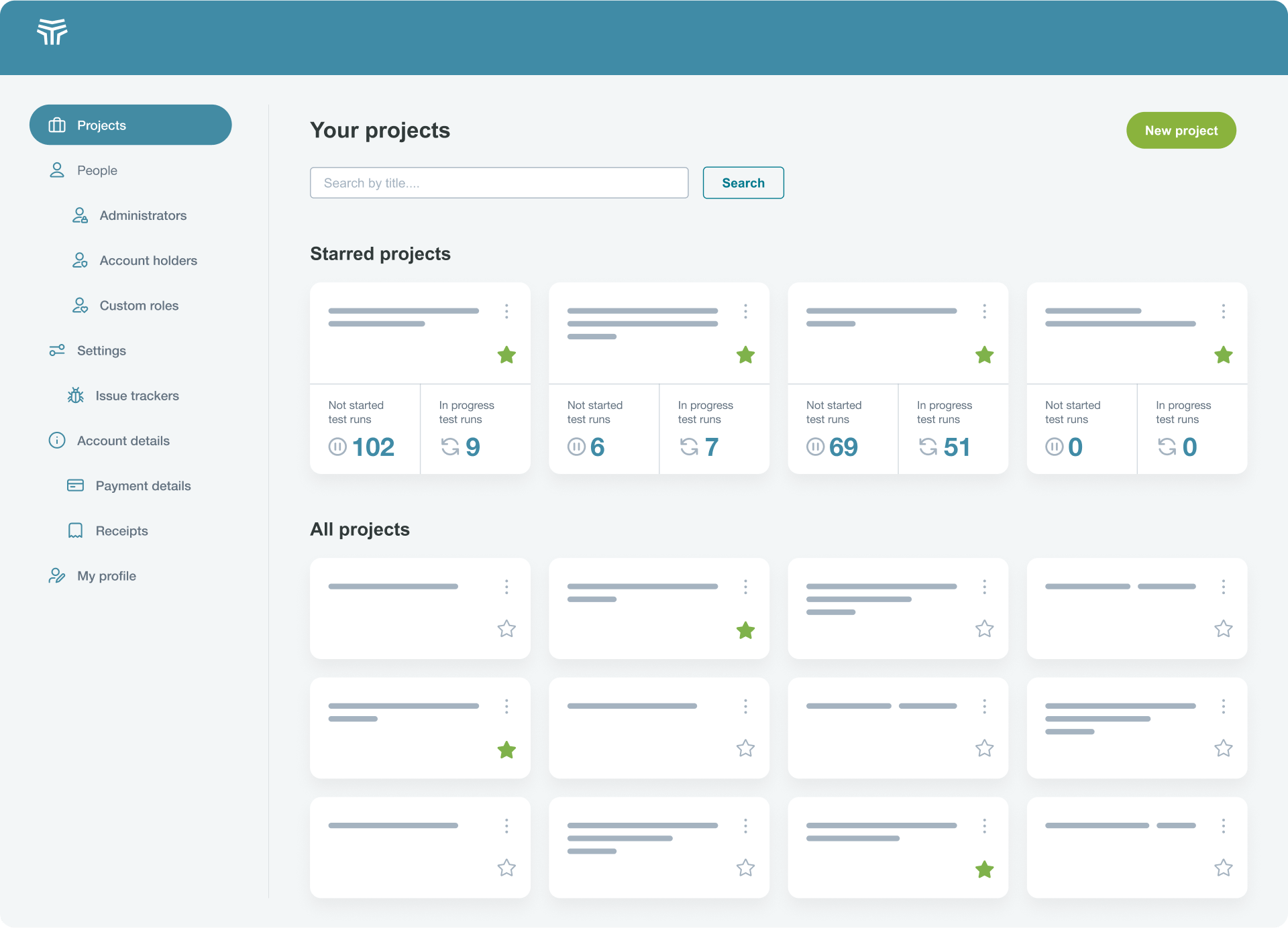
Website: www.testlodge.com
Description: With a strong focus on usability and efficiency, TestLodge offers an easy-to-use test case management solution that is suitable for teams of all sizes.
Main features:
TestLodge provides the core features that QA teams need to perform their jobs efficiently without overwhelming users and distracting them from core activities, such as writing test cases and performing tests.
TestLodge provides users with the ability to store their requirements and user stories directly within the tool. When doing this, the requirements can be associated with the relevant test case, allowing for a requirements matrix report to be generated, showing which requirements have tests that verify the intended behaviour.
Test runs can be made up of multiple test suites, and different browsers and devices can also be easily defined. With a clear test run interface, TestLodge allows users to cycle over their tests in an efficient manner.
TestLodge has a wide range of integrations with the most popular issue tracking and project management tools. With the ability to automate the raising of defects when a test fails, update any existing tickets as fixes are verified and sync back the issue status into TestLodge. The two-way integrations will improve the workflow between issue tracking and test management activities.
With a single set price per plan and no per-user charges, TestLodge is one of the more affordable products available on the market. It will scale very well as your team grows and will be able to accommodate your entire company, allowing for visibility of testing efforts at no additional cost.
Not every company operates in the exact same way, and although TestLodge is designed to be easy to get started, it also allows for customisation when needed. Custom user roles will enable administrators to create and define who should have access to read or write in each area of the tool. Custom fields for test plans, requirements, test cases, and test runs will allow teams to store the data they need.
4. TestRail
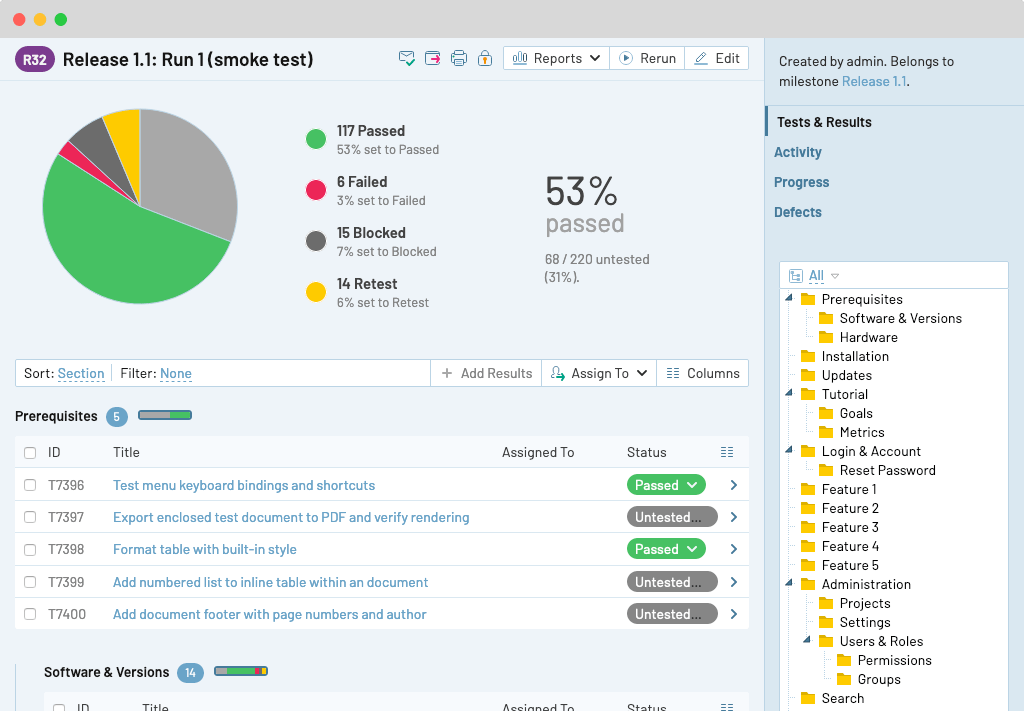
Website: https://www.gurock.com/testrail
Description: TestRail is a web-based test case management tool. Testers, developers and team leads use it to manage, track and organize software testing efforts. TestRail allows team members to enter test cases, organize test suites, execute test runs and track their results, all from a modern and easy to use web interface.
Main features:
Comprehensive test case management
This tool enables users to create the most detailed test cases in a structured way, including preconditions, steps, and expected results. Creating a test case, users can use rich text formatting, add attached files, and screenshots. To track changes and ensure transparency test case history is at hand. Created test cases can be organized in suites and section hierarchies. Besides, baselines for multiple branches and versions are available. Fields can be customized for your needs.
Test run execution and real-time results tracking
Users can easily start test runs and select test cases using various filters, Results are recorded and can be grouped, filtered, and sorted according to users' needs.
Real-time reporting and metrics
Testrail enables users to create comprehensive reports for projects, milestones, plans, and runs, compare results across multiple test runs, milestones, and configurations, track the workload of the entire team to adjust assignments and resources, get traceability and coverage reports for requirements, tests, and bugs, keep track of test case changes, case activity, and newly added tests. The tool identifies most failed tests and tracks manual and automated tests. All reports can be generated automatically following the prescribed schedule. Various charts and stats are accessible to all team members.
Time estimates and unique progress forecasts
The tool records estimates and actual test run duration for complete, accurate time tracking. TestRail's unique forecasting lets users control the testing progress based on historical time data. Remaining efforts, completion dates, and verified tests are easily estimated, tracked, and forecasted.
Seamless integration
TestRail can be integrated with almost any tool. It easily integrates with Jira and many other bug tracking systems, requirement management tools, Selenium, unit testing frameworks, or continuous integration (CI) systems like Jenkins, Active Directory, LDAP, and any custom authentication system for single sign-on.
Team Collaboration and Productivity Tools
Tests with comments, attachments, and feedback loops can be assigned to users to enable collaboration. Users receive automated email notifications about newly assigned tests. Besides, productivity can be increased due to such features as personalized todo lists, multiple filters and search, bulk test case editing, test cases and plan reusing, user role and permission assignment, user grouping, etc.
Customization and scalability
Users can maximally customize the system to make it more suitable for their workflow. Different custom fields and custom statuses for tests can be defined. Custom roles and permissions can be assigned to users, as well. Unique UI scripts make it possible to customize many aspects of the application and UI. Defect plugins, auth integrations, and the REST API can be customized as well. In addition, TestRail is highly scalable; it scales from 1-1000+ users with numerous test cases with ease.
Security
TestRail uses reliable security measures that involve technical and organizational security controls to prevent data loss or other unauthorized data processing operations.
Enterprise edition
TestRail Enterprise Edition meets the requirements of larger companies with enterprise-level features and support. It is available for installation on a local server, but a cloud-based/SaaS solution can be chosen as well. This edition is characterized by enhanced API performance, audit log, configurable backup time, and on-demand restoration.
5. qTest
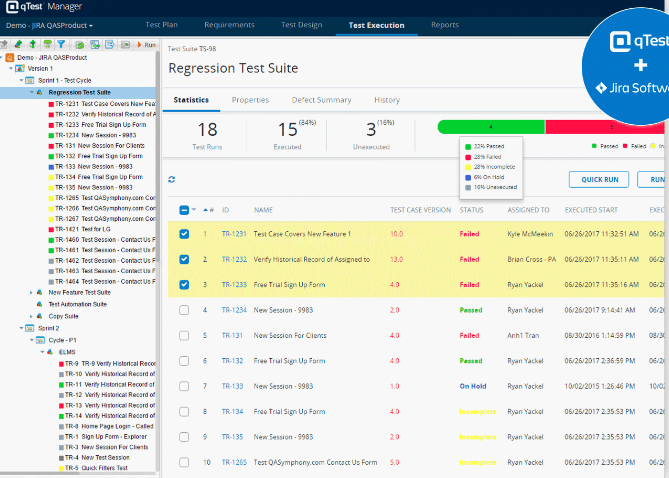
Website: www.qasymphony.com
Description: The qTest platform provides Agile teams with a suite of software testing tools designed to improve speed, efficiency and collaboration throughout the software testing lifecycle.
Main features:
Test execution tracking and managing
qTest Manager provides an intuitive experience for test execution. With qTest, users can plan, assign, and execute tests with confidence. This offers visibility into the entire life cycle across projects, builds, cycles, and suites. qTest provides test execution, whether a team is focused on manual, automated, or exploratory testing.
Test automation management and scalability
qTest Manager supplies users with a flexible tool to manage any kind of automation strategy at scale. Whether users prefer open-source or code-less model-based approaches, qTest provides integration for that.
Intuitive organization
With qTest scripts creating, editing, and auditing is very simple. Users can organize all test cases in a single place and create the following logical categories for execution: New feature, Regression, Application areas
Simplified administration
Testers and stakeholders can have access to the required projects and information as qTest gives an opportunity to assign administrative rights and group levels. LDAP integration streamlines user management and offers a single-sign-on.
Customization
Customization is available at the project and artifact level to fit a company's workflow. Users can use custom field types, system values, and formats. The system can also be customized at the process level, making custom event notifications to keep testers up-to-date but not overloaded.
Approval workflows optimization
qTest lets users know what test case version failed, and tracks which versions were approved and executed. Testers get notifications about newly approved versions.
Artifacts maintenance and sharing
qTest supplies users with a vast test case library. The tree structure allows users to easily move artifacts from folder to folder and copy them to other projects by simply dragging and dropping.
6. Xray Test Management for Jira
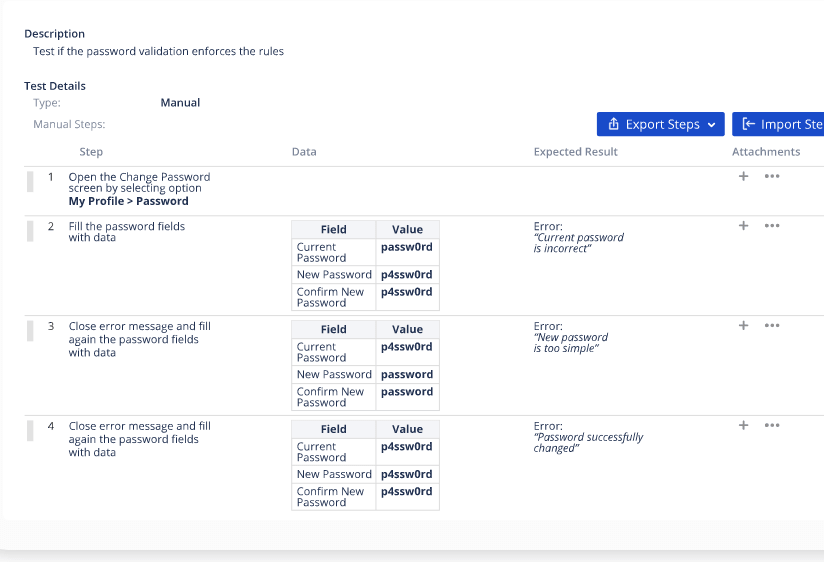
Website: https://www.getxray.app/
Description: Manual & Automated Test Management App for QA in Jira. Test Case Management, Software Testing and Quality Assurance in Jira.
Main Features:
Test management
Users are able to create, clone, edit, organize, plan, and execute your manual and automated tests (Cucumber and other BDD frameworks supported natively; it also supports other test frameworks). Created tests can be organized in folders and sets according to project, component, version, and label.
Requirements Traceability
With Xray, users can easily get full traceability between requirements, tests, defects, executions, and generate the Requirements Traceability Report.
Tracking, analyzing and advanced reporting
This tool enables users to track test progress in real-time and changes in all artifacts. It generates near real-time coverage analysis and helps create comprehensive, customizable reports in docx, xlsx, pdf.
Integrations Users can easily integrate and extend using Xray's REST API. Moreover, they can integrate with their favorite DevOps tools, including Bamboo, GitLab, and Jenkins, import automated and manual tests from CSV and JSON, import automated tests, and their results from automated test frameworks through TestNG, JUnit, NUnit, and other runners.
Conclusion:
Nowadays, there is a significant number of various test management tools. Most of them have the most important features and can be significantly customized according to your needs. Furthermore, they generally provide users with an opportunity for integration with the most popular systems to optimize testing processes. To choose the most appropriate test management tool, you should summarise the key features required for your QA testing company and compare the pricing of the apps. All of the above-listed apps have a trial period, so you can try it before buying.
FAQs
Q: What is the purpose of test management tools?
Test management tools serve as centralized platforms for planning, executing, and tracking tests throughout the software development life cycle. They facilitate efficient test case management, streamline test execution, enable defect tracking, promote collaboration, and provide reporting and analytics capabilities.
Q: Can test management tools integrate with other software?
Yes, many test management tools offer integration capabilities to seamlessly integrate with other software and tools commonly used in software development and testing processes. Integration with project management tools, version control systems, test automation frameworks, and bug tracking systems enhances workflow efficiency and data consistency.
Q: How do test management tools improve test efficiency?
Test management tools improve test efficiency by providing a structured approach to test planning, organization, and execution. They automate test execution processes, integrate with test automation frameworks, and offer features like parallel test execution and scheduling. Additionally, these tools enable efficient defect tracking, collaboration among team members, and provide real-time visibility into test progress, allowing teams to identify and address issues promptly.
Q: What are some popular test management tools?
Some popular test management tools in the market include Tool 1, Tool 2, Tool 3, Tool 4, and Tool 5. These tools offer a range of features such as test case management, test execution and automation, defect tracking, collaboration tools, and reporting and analytics capabilities. It's important to evaluate these tools based on specific requirements, budget, and team needs to find the best fit.
Q: How do I choose the right test management tool for my team?
When choosing a test management tool, consider factors such as budget, scalability, user-friendliness, integration capabilities, and the level of support and training provided. Evaluate the specific needs of your team and projects, and ensure the tool aligns with your testing goals and processes. It may be beneficial to try out demos, read reviews, and seek recommendations from industry peers to make an informed decision.
Q: What are the best practices for using test management tools?
Some of the best practices for using test management tools include defining a clear test strategy, creating well-structured test cases, regularly updating and maintaining test assets, cultivating collaboration among team members, and utilizing reporting and analytics features. These practices help optimize the tool's effectiveness and improve the overall testing process.
Similar Posts

5 minutes to read
Top 7 AB Testing Tools That You Should Use in 2025
- Mobile App Testing Tools
- Android App Testing Tools
- Mobile App Automation Testing Tools
- App Testing Tools
- iOS App Testing Tools

12 minutes to read
Best Cross Browser Testing Tools in 2025
- Cross Browser Tools
- Cross Browser Testing
- Tools for Testing Browser
- Cross Browser ToolsReview

26 minutes to read
Top automation testing tools of 2025
- Software Test Automation
- Automated Testing
